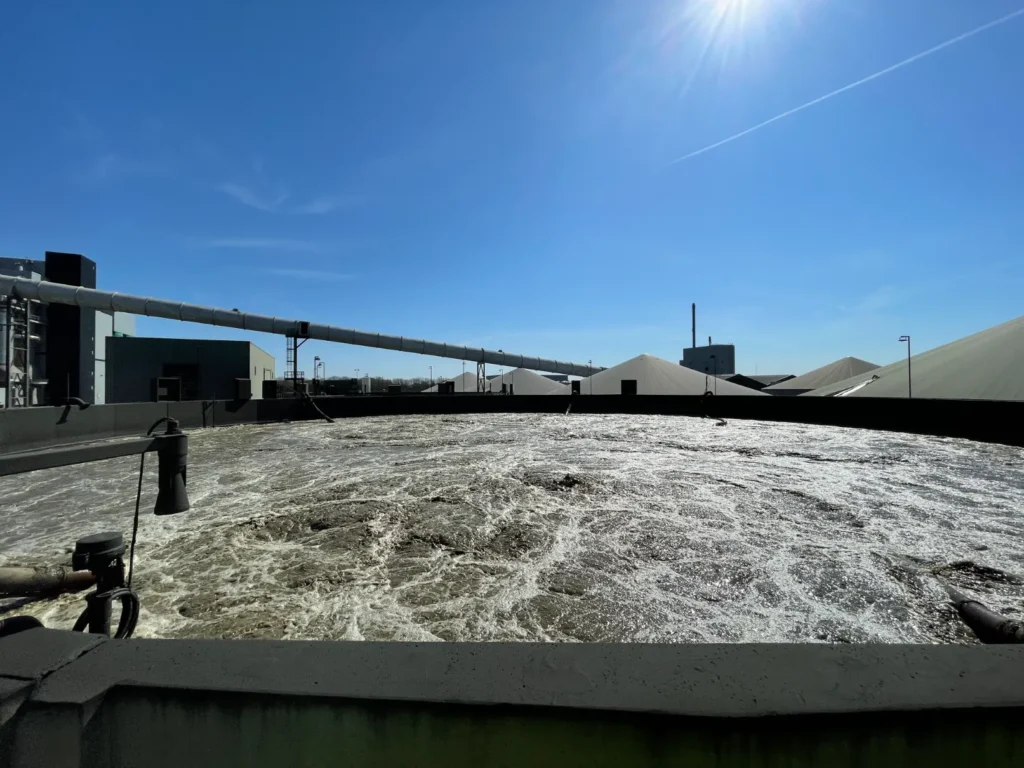We receive wastewater from a wide range of critical industries, both domestically and internationally, such as the pharmaceutical industry, infrastructure facilities like airports, the oil industry, environmental, and food production. We treat wastewater that cannot be discharged into the sewer system due to explosion hazards, health risks, or odor issues. Additionally, we clean wastewater with heavy metals, wastewater with high pH levels, high carbon content, and salt content. Wastewater that requires acclimation of the active sludge or adsorbs to sludge. It can also involve wastewater from industries that experience peak periods where they do not have the necessary capacity to treat the water themselves. We are one of the few facilities with the necessary capacity to handle even large waste fractions that require immediate treatment
We clean the vast majority of substances with over 99.5% efficiency. This is possible because the wastewater we receive goes through a series of treatment steps before being returned to the natural cycle. Not all types of wastewater require the same step-by-step treatment, but for a significant portion of the wastewater, it undergoes chemical precipitation first, followed by pre-treatment, before receiving biological treatment in our active sludge system. Once this process is completed, the water goes through a clarification system, undergoes microfiltration, and activated carbon treatment before it can finally be discharged. Another reason for our effective cleaning is that all the waste fractions we receive are managed in a closed-loop system. This means they are delivered either by tanker or ship, and we have taken samples of the waste before it arrives at our facility. This way, we can determine the most effective treatment for each wastewater fraction, unlike a typical treatment plant that doesn’t have control over the waste fractions that flow in through the sewer system.
There are limits to how well we can currently clean wastewater with our current best available technology (BAT). Therefore, there will be discharges from our treatment activities in Stigsnæs. This also means a minor impact on the marine environment in Agersø Sound and the Great Belt. As one of the few facilities in Denmark, we conduct daily external tests and eco-toxicological tests to measure the overall impact on the local marine environment. These tests indicate that the overall impact of our discharges is minimal. In terms of the impact on fish and specifically benthic fish, reports describe that we and other treatment plants in Denmark represent an impact of approximately 4%, while other sources such as agriculture and overfishing account for the largest negative impact. The alternative to biological treatment of industrial wastewater is incineration, which results in a climate impact (CO2) of up to 30 times that produced during biological treatment. Increased CO2 absorption in the ocean leads to ocean acidification, which burdens marine life.
Denmark and other countries import and export waste to ensure the best possible treatment. Some countries specialize in certain types of treatment and cleaning, and in Denmark, we excel in the treatment of wastewater, including our industrial treatment plant in Stigsnæs. We also have some of the strictest requirements in the field of water. By sending waste to where it can be best treated, we contribute to a cleaner Europe and a market with fair internal competition in terms of treatment efficiency. In RGS Nordic, we import wastewater when there is a capacity challenge in the sending country and when we can demonstrate that we can clean it better. This is the case, for example, with oil-contaminated wastewater from the offshore industry, where production typically experiences peak periods. All waste imports must be approved by authorities in the sending country and Danish authorities, both of which have the option to refuse the export/import of the waste.
The Environmental Protection Agency is now the authority responsible for all our activities at the facility in Stigsnæs. They are in charge of monitoring our operations, workplace safety, and treatment efficiency. Additionally, we conduct water quality testing in our operational laboratory before, during, and after treatment.

© Industrial Water Solutions A/S